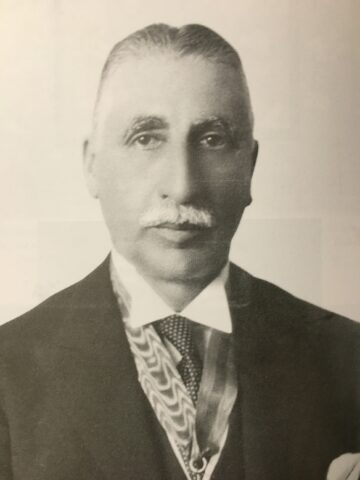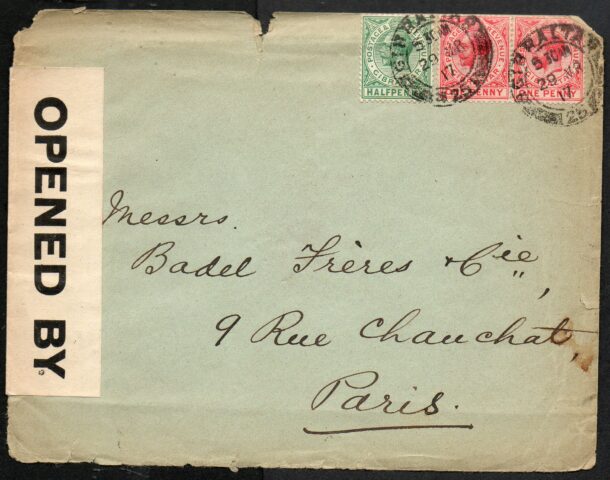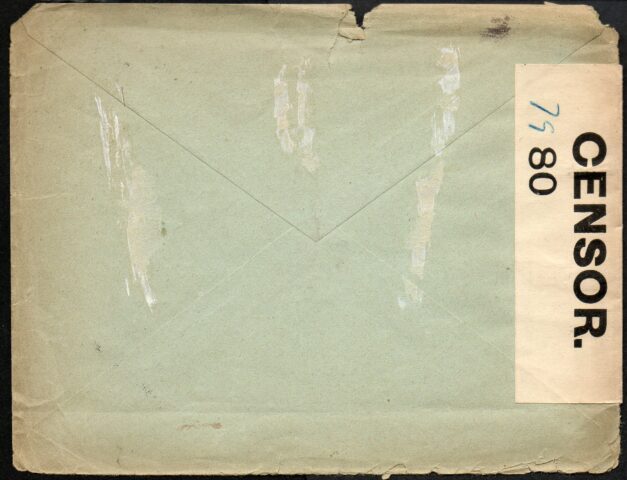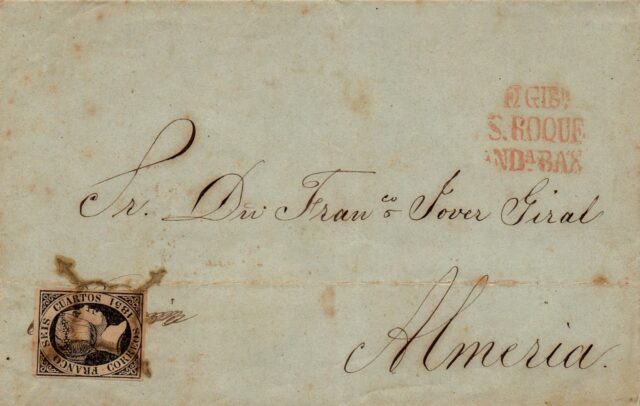Three days of philately in Gibraltar
By Richard Garcia
The exhibitions to be held on 16, 17 and 18 September at the Gibraltar Garrison Library will show different aspects of philately. At one level, philately is about collecting postage or revenue stamps, or both. At a different level, and perhaps of wider interest, is the way in which philately can be a window to the social history of Gibraltar.
Stamps were printed primarily to be used for postage or revenue purposes. The postal purposes can reveal interesting usages. Philatelists call this postal history.
One such usage was to send letters in times of war. Many families in Gibraltar recall stories told at home of the evacuation of a large proportion of the civilian population from Gibraltar during World War II. Breaking up families in this way meant that many letters were sent to and from Gibraltar by the evacuees and their family who had remained behind. Soldiers in the garrison and fortress also sent and received letters to and from their families. All these letters had to be censored, as it was wartime. A study of these censor marks can be very revealing.
The person in charge of censorship of civilian mails was Arthur Carrara, a barrister and Leader of the Bar in the Supreme Court of Gibraltar. He appointed a number of ladies as mail examiners. They continued in this role until they were obliged to leave Gibraltar as evacuees.



In addition, as from the early days of the war, mails were intercepted on passing ships from neutral countries and examined by the Imperial censorship examiners who were stationed in Gibraltar. They also examined incoming mail, from certain countries, that had not been censored. They worked from the newly completed King George V hospital, the KGV, at South Barracks Road, that had just been completed and not yet brought into use as a hospital. In due course, the Imperial censors were sent to Bermuda.
There were thus different systems of censorship all taking place side by side in Gibraltar during the war. There was civilian censorship, military censorship and censoring of intercepted and terminal mails. Some of the displays at the Garrison Library will focus on censored mail.
In addition to letters censored in Gibraltar, letters from Gibraltar Camp written to Gibraltar were censored. They form part of Gibraltar’s postal history. Typically, envelopes were slit open; the letter was read by a censor and anything that needed to be removed from the text crossed out in black; and the envelope was then resealed with a label.
At the start of the war, the stamps on letters were cancelled with a slogan postmark advertising Gibraltar as a tourist destination. The wording in the slogan read, GIBRALTAR THE TRAVEL KEY TO THE MEDITERRANEAN. Wartime meant that tourism ceased. The slogan thus became inappropriate, and it had to be changed: the word TRAVEL was removed. It was scraped off the original cancellation stamp using a razor blade!
It was not just in World War II that censorship of mails was carried out in Gibraltar. Similar procedures had been followed in World War I. In the example shown, the letter was resealed by censor number 80 after he had checked its contents.
During World War 1, patriotic labels were used in Gibraltar and stuck on envelopes. They are part of what is called Cinderella philately, stamps that were really labels and had no postal value. These labels are sometimes colourful and attractive. The two labels shown, which look like stamps, read respectively “Remember Edith Cavell” the British nurse, who was “Murdered, October 12th 1915” in German-occupied Belgium, and “Remember Lusitania” which was “Torpedoed 7th May 1915”. Nearly 1,200 people died when the ship sank close to Ireland. The labels were both emotionally charged and were intended as propaganda for the Allies.


Mail in wartime is just one aspect of philately that will be on display at the Garrison Library during the Three Days of Philately. A much wider range can be seen and enjoyed by the general public, as there is no admission charge. To give an example, letters sent from Gibraltar in the 19th century, between 1850 and 1875, had to be prepaid using Spanish stamps that were on sale at the Gibraltar Post Office. An example of one of the earliest letters is depicted: it was sent to Almeria in December 1851. Only four covers have been reported to date used in Gibraltar that year bearing this stamp. For reasons of security, Spain changed its postage stamps every year. Spanish stamps were used in Gibraltar on mail to Spain so that they could be sent at a cheaper rate than if they had to be prepaid using the English stamps then current in Gibraltar. The postage was one-sixth of what it would otherwise have been. The letter bears a red cachet confirming the origin of the letter reading De Gibr/ S Roque/ Anda Baxa i.e. “De Gibraltar, San Roque, Andalucia Baja” (Lower Andalucia).
Yet another aspect is that of postal stationery and picture postcards. They were legalised for sending through the post in Gibraltar at the postcard rate of postage in November 1897. The example shown was sent on 24 April 1897, almost seven months before they were legalised, because the sender was Ferdinand Schott and he added his cachet as German Consul.
There are three days of exhibitions, and there will be different exhibits on each occasion. Five sessions in all are planned. The first, on the morning of Tuesday 16 September starting at 10.30 a.m. after the official opening of the event, half an hour earlier; a second display in the afternoon; a third display on Wednesday afternoon; the fourth display as from 10 a.m. on Thursday afternoon; and the final session on Thursday afternoon. All afternoon sessions begin at 2.00 p.m.
The exhibition on the first day will be mounted by members of the Gibraltar Study Circle to mark the 50th anniversary of the society and will be exclusively dedicated to Gibraltar philately in the widest sense. The final two sessions on Thursday will concentrate on Morocco philately, including Gibraltar stamps and postal stationery and postal history used in Morocco.









